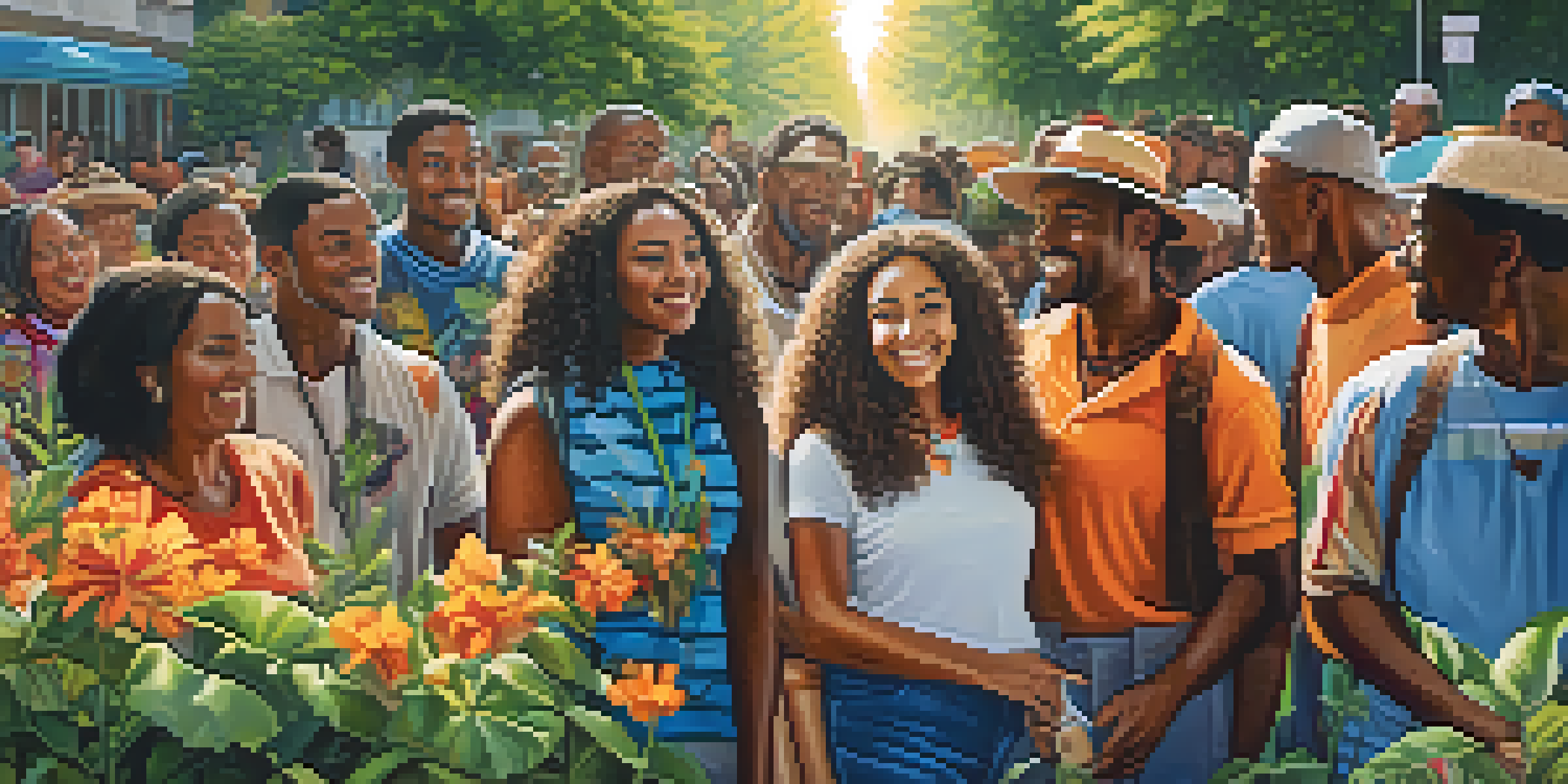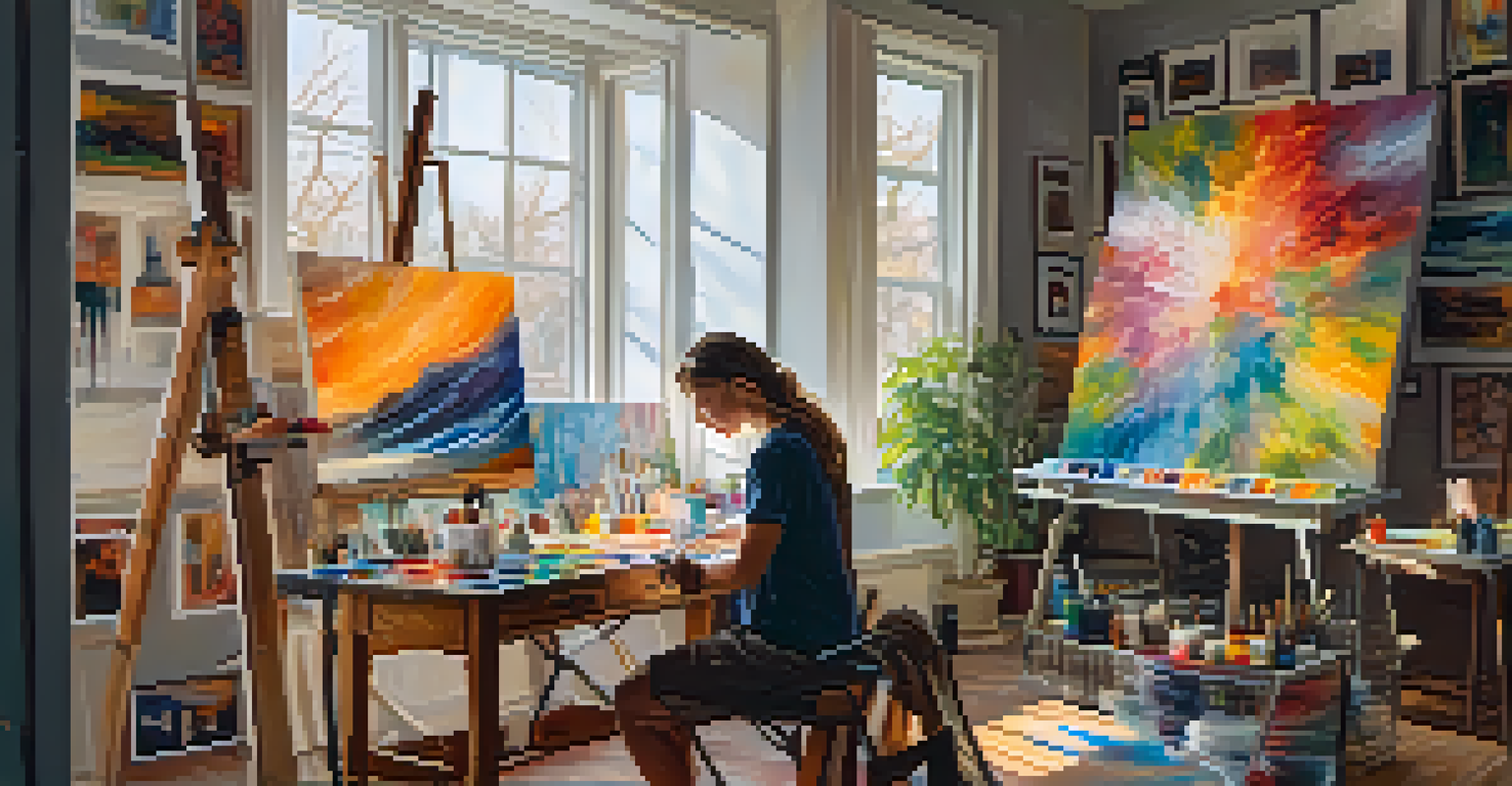The Role of the Artist in Society: Ethical Responsibilities

Understanding the Artist's Influence on Culture
Artists have a unique ability to shape cultural narratives and influence public perception. Through their work, they can reflect societal values, challenge norms, and inspire change. For instance, street art often comments on political issues, making art a powerful tool for social commentary that resonates with the public.
Art is not freedom from discipline, but disciplined freedom.
This influence means that artists can either uplift or undermine societal values, depending on the message they choose to convey. By understanding their role in shaping culture, artists can make informed decisions about the themes and subjects they explore. Ultimately, the impact of their work extends beyond the canvas or stage, affecting the community in profound ways.
As custodians of culture, artists must recognize their power and the potential consequences of their art. This responsibility can drive them to engage more thoughtfully with the issues they depict, fostering a greater sense of accountability in their creative process.
The Artist as a Mirror to Society
Artists often serve as mirrors, reflecting societal truths, struggles, and triumphs. By portraying real-life experiences, they can evoke empathy and understanding among diverse audiences. For example, literature that addresses social justice issues helps readers confront uncomfortable realities and consider different perspectives.

Through this reflective role, artists can bring attention to marginalized voices and stories that might otherwise go unheard. This creates a dialogical space where art becomes a means of advocacy, giving a platform to those who need it most. By shining a light on these narratives, artists encourage society to engage in deeper conversations about equity and justice.
Artists Shape Cultural Narratives
Through their work, artists reflect societal values and can inspire change, making them powerful influencers in culture.
However, this role also comes with the burden of ethical responsibility. Artists must thoughtfully consider how they represent these stories and ensure they do so with respect and authenticity, avoiding stereotypes and misrepresentation.
Ethics of Representation in Artistic Work
Representation in art is crucial, as it shapes how individuals and communities see themselves and others. Artists must navigate the complexities of portraying identities, cultures, and experiences that are not their own. This requires sensitivity and a commitment to ethical practices that honor the stories of those being represented.
The role of the artist is to make the revolution irresistible.
For instance, a filmmaker creating a story about a culture outside their own should engage with that community, seeking input and collaboration. This approach not only enriches the narrative but also fosters a sense of respect and authenticity. By prioritizing ethical representation, artists can avoid perpetuating harmful stereotypes and instead celebrate the diversity of human experiences.
Ultimately, the ethical responsibility of representation lies in the artist's willingness to listen, learn, and engage with the communities they depict. This commitment not only enhances the quality of their work but also contributes positively to societal understanding and cohesion.
Navigating Censorship and Artistic Freedom
Censorship poses a significant challenge for artists, often stifling their ability to express critical viewpoints. In many societies, artists face the dilemma of balancing their desire for creative freedom with the potential repercussions of their work. This tension highlights the ethical responsibility artists have to speak truthfully, even when it’s uncomfortable or controversial.
When artists challenge the status quo, they risk backlash, yet they also ignite essential conversations about power, freedom, and justice. For example, political cartoons often tackle sensitive subjects, pushing boundaries and prompting society to reflect. In these instances, artists must weigh the potential impact of their work against the risks they may face.
Ethical Representation Matters
Artists have a responsibility to represent identities and cultures authentically, avoiding stereotypes and promoting understanding.
Navigating this landscape requires resilience and a strong ethical compass. Artists can leverage their platforms to advocate for freedom of expression while remaining aware of the consequences their work may evoke.
The Role of Collaboration in Ethical Art Practices
Collaboration can enhance the ethical dimensions of artistic work, fostering inclusivity and shared ownership of narratives. By partnering with individuals from diverse backgrounds, artists can create more authentic and representative art. This approach not only enriches the creative process but also encourages dialogue and understanding among collaborators.
For example, community-based art projects often involve local voices in the creation process, ensuring that the artwork genuinely reflects their experiences and concerns. Such collaborations empower communities, allowing them to take an active role in shaping the narratives that represent them. This fosters a sense of agency and ownership, which is crucial in ethical art practices.
Ultimately, collaboration is about building relationships and creating art that resonates on multiple levels. By embracing this approach, artists can contribute to a more equitable and inclusive artistic landscape.
The Impact of Technology on Artistic Ethics
In our digital age, technology plays a pivotal role in how art is created, shared, and consumed. While it offers exciting opportunities for innovation, it also raises ethical questions about ownership, authenticity, and representation. Artists must navigate these challenges thoughtfully to maintain their integrity and the integrity of their work.
For instance, the rise of digital art has blurred the lines of originality and copyright, prompting discussions about intellectual property. Artists need to be aware of how their work can be appropriated or misused in the digital realm. This awareness is crucial in protecting their creative rights while ensuring their art remains a tool for positive change.
Collaboration Enhances Artistic Integrity
Working with diverse communities can create more authentic narratives, fostering inclusivity and shared ownership in art.
Moreover, technology can also amplify marginalized voices, providing platforms that were previously inaccessible. Artists can use social media to engage with audiences and advocate for social change, reinforcing the ethical responsibilities that come with their influence.
Art as a Catalyst for Social Change
Art has historically been a powerful catalyst for social change, inspiring movements and prompting action. From protest songs to impactful visual art, artists have used their craft to raise awareness about critical issues. This ability to galvanize public sentiment underscores the ethical responsibility artists bear when addressing societal challenges.
For example, during times of social upheaval, artists often take to the streets or social media to voice their concerns and rally support. Their work can mobilize communities, encouraging collective action and fostering hope. By harnessing their creative talents for social good, artists can make a lasting impact on society.

However, with this power comes the responsibility to ensure that their messages are constructive and promote positive change. Artists must strive to create work that not only highlights problems but also inspires solutions, aligning their creative endeavors with ethical principles.